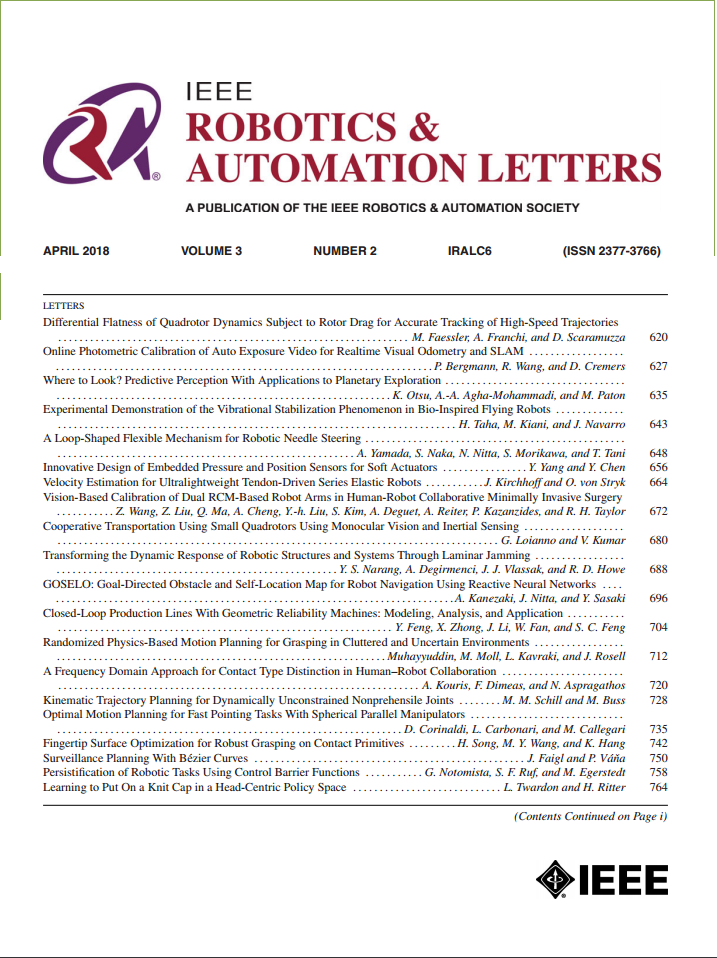Towards Shape-Adaptive Attachment Design for Wearable Devices Using Granular Jamming
IF 4.6
2区 计算机科学
Q2 ROBOTICS
引用次数: 0
Abstract
Attaching a wearable device to the user's body for comfort and function while accommodating the differences and changes in body shapes often represents a challenge. In this letter, we propose an approach that addresses this problem through granular jamming, where a granule-filled membrane stiffens by rapidly decreasing the internal air pressure (e.g., vacuum), causing the granule material to be jammed together due to friction. This structure was used to conform to complex shapes of the human body when it is in the soft state while switching to the rigid state for proper robot functions by jamming the granules via vacuum. We performed an experiment to systematically investigate the effect of multiple design parameters on the ability of such jamming-based interfaces to hold against a lateral force. Specifically, we developed a bench prototype where modular granular-jamming structures are attached to objects of different sizes and shapes via a downward suspension force. Our data showed that the use of jamming is necessary to increase the overall structure stability by 1.73 to 2.16 N. Furthermore, using three modules, high suspension force, and a low membrane infill (基于颗粒干扰的可穿戴设备形状自适应附件设计
将可穿戴设备安装在用户的身体上,既能满足用户的舒适度和功能,又能适应不同体型的变化,这通常是一项挑战。在这封信中,我们提出了一种通过颗粒堵塞来解决这个问题的方法,其中颗粒填充的膜通过快速降低内部空气压力(例如真空)而变硬,导致颗粒材料由于摩擦而卡在一起。这种结构在处于柔软状态时符合人体的复杂形状,同时通过真空堵塞颗粒切换到刚性状态以实现机器人的正常功能。我们进行了一项实验,系统地研究了多种设计参数对这种基于干扰的界面抵御侧向力的能力的影响。具体来说,我们开发了一个台架原型,其中模块化颗粒干扰结构通过向下的悬浮力附着在不同大小和形状的物体上。我们的数据显示,使用干扰是必要的,可以将整体结构稳定性提高1.73到2.16 N.此外,使用三个模块,高悬架力和低膜填充(25%)也有助于提高抗侧向力。我们的研究结果为未来使用颗粒干扰结构实现可穿戴附件奠定了基础。
本文章由计算机程序翻译,如有差异,请以英文原文为准。
求助全文
约1分钟内获得全文
求助全文
来源期刊

IEEE Robotics and Automation Letters
Computer Science-Computer Science Applications
CiteScore
9.60
自引率
15.40%
发文量
1428
期刊介绍:
The scope of this journal is to publish peer-reviewed articles that provide a timely and concise account of innovative research ideas and application results, reporting significant theoretical findings and application case studies in areas of robotics and automation.
 求助内容:
求助内容: 应助结果提醒方式:
应助结果提醒方式:


